Forehead Chart Forehead Chart Size Funny
Understanding kids helmet sizes is essential to getting a proper fit. Without a proper fit, a helmet cannot completely protect your child's head like it was designed to do! Kids helmets should Not flop around on a kid'due south head, but rather stay firmly in place, even when your child is on the motion!
Y'all should always have a kid wear a properly fitted helmet when riding a bike, skateboard or scooter. If a helmet isn't the right size, information technology won't stay in place and can't properly protect your kid's head if they crash!
Luckily kids helmet sizes and getting a great helmet fit are pretty easy to get right if you follow a few simple steps that we'll guide y'all through beneath.
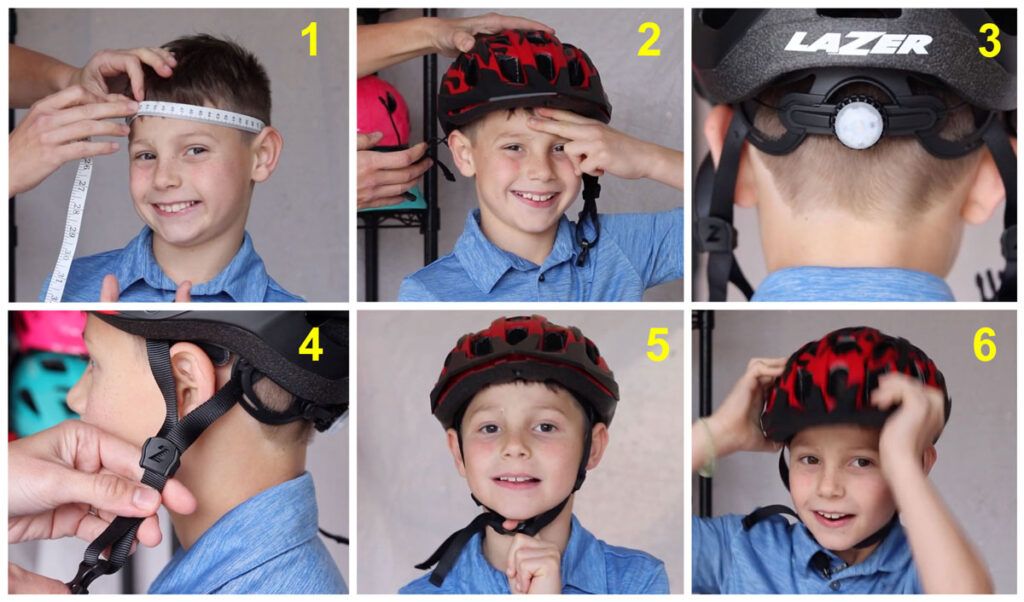
How do Kids Helmet Sizes Work?
Kids helmet sizes have all sorts of names. Toddler, Child, Youth, XS, South, M… Depending on the brand of helmet, the sizes tin can exist called something completely dissimilar!
Caput Circumference is King!
There is only one thing you lot actually need to focus on – your child's head circumference! Every helmet, no matter its size, volition come with a head circumference range. For instance, the Giro Tremor has a range of fifty – 57 cm. If your kid'southward caput circumference falls in that range, the helmet should be a fit!
How Should a Bike Helmet Fit?
The right size helmet must besides be adjusted properly for a great fit. The following 6 uncomplicated steps volition guide yous through finding a kids helmet that is just the right size, then adjusting that helmet then that it stays snuggly on your child'south head to provide them the protection they demand to ride safety.
Visual learner? Allow us help yous through step-past-footstep of properly sizing and adjusting your child bicycle helmet in our video demonstration. Missed a stride? Not to worry, we've outlined all of the steps shown in this video below.
6 Easy Steps to Getting a Perfect Fit
(1) Measure your Child's Caput
You can't get a helmet to fit well if its not the right size!
- Using a soft tape measure out, measure the circumference of the child's caput virtually an inch above their eyebrows, or the thickest office of their head.
- Compare this measurement to the head size range sticker plant on the within of the helmet. If you're ownership online, the manufacturer should have their size range listed, or cheque our website!
(2) Position the Helmet Just Correct
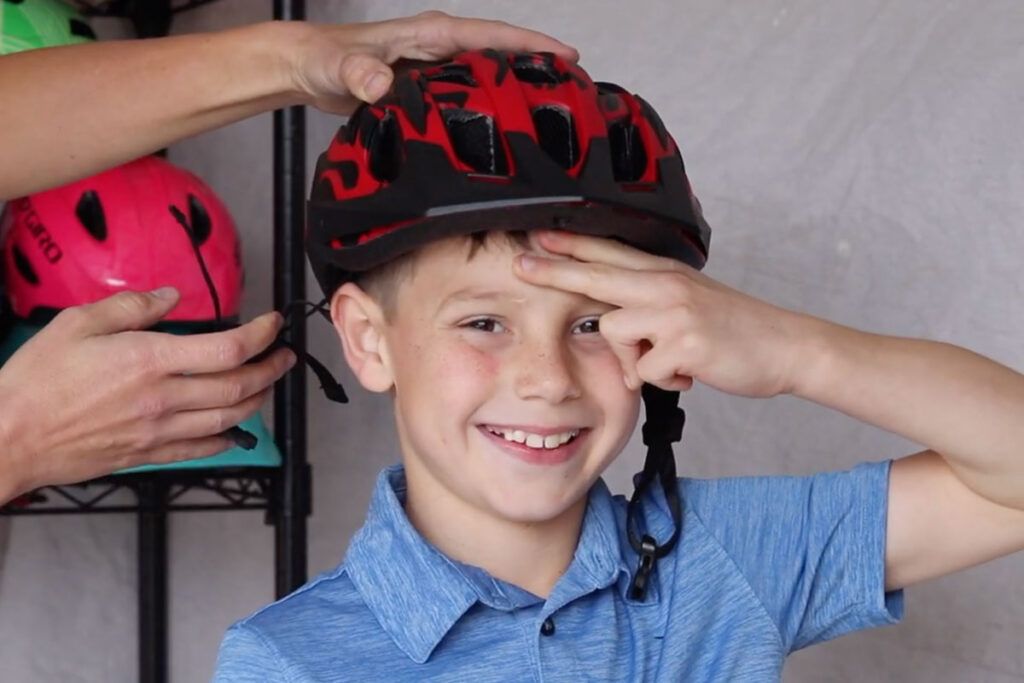
A helmet that is besides low or tilted frontwards can obstruct a child's view while riding. A helmet that's too high or tilted back won't protect a child'south face or forehead sufficiently.
- Remove whatsoever thick ponytails or hair clips that may foreclose the helmet from sitting flush on a child's caput.
- Place the helmet squarely on top of your child's head.
- The helmet should sit about two finger widths higher up the child's eyebrows.
- Test: A properly positioned helmet should stick out past the tip of a child's nose when viewed from the side. You can test this by having your child tap their helmet confronting the wall.
(three) Tighten for a Snug Fit
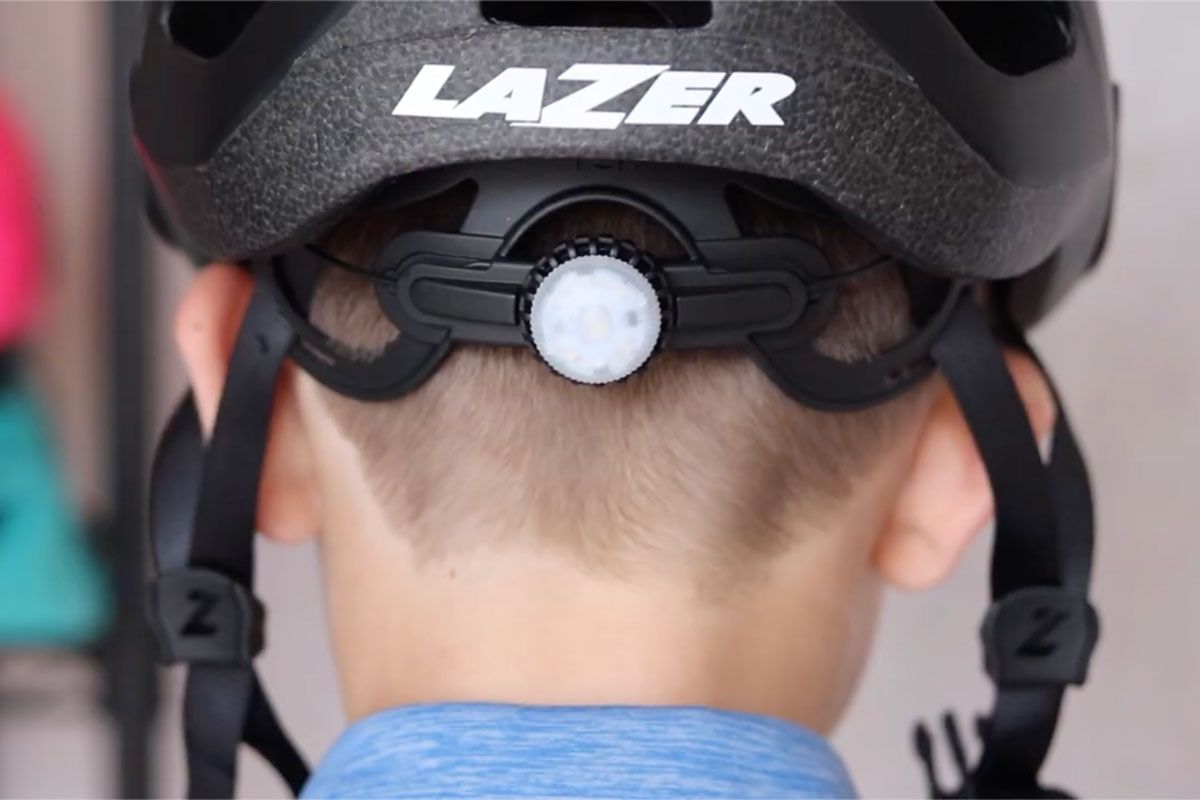
A helmet should be firmly, but comfortably in place.
- Once the helmet is sitting correctly on the head, and before you buckle the helmet, tighten the dial-adjust knob on the back of the helmet.
- Turn the knob until the internal cage is snug, only not uncomfortable, on your kid's head.
- If the helmet does Not have a dial-adjust knob, information technology should have some pads that come in various widths to widen or loosen the inside of the helmet.
- Milkshake Exam: To bank check that the helmet is tightened correctly, have your child shake their head back and along (without information technology buckled). The helmet should stay firmly in identify.
(4) Brand a "V" with the Side Straps
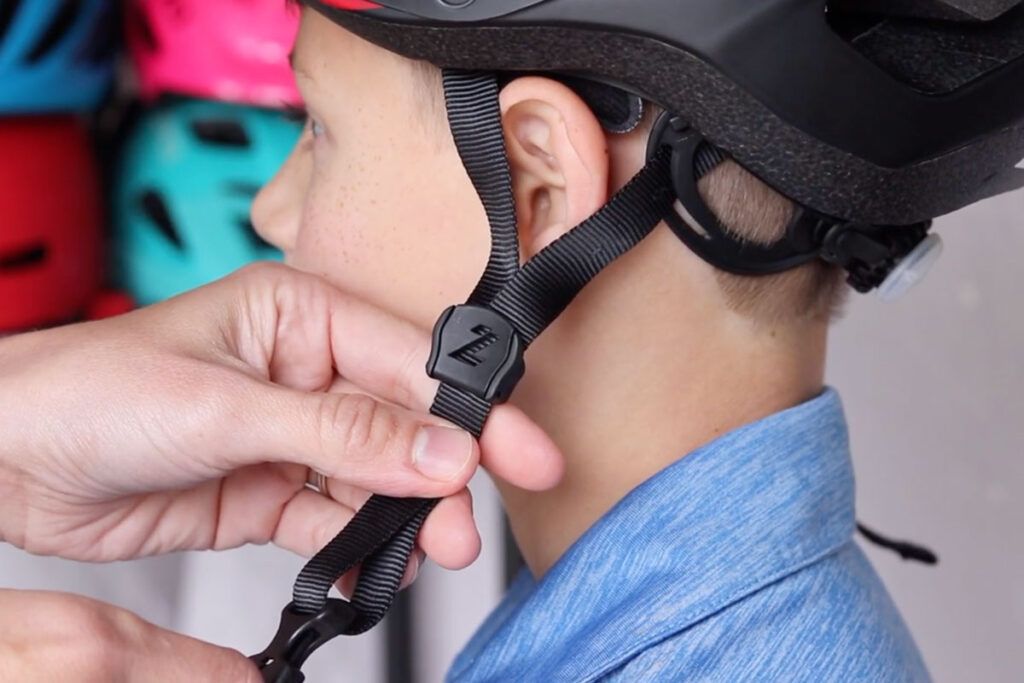
Adjusting the sliders on the side straps is required to go a secure fit, but it's frequently disregarded. There are a few newer helmets that don't have these sliders, so if your side straps are sewn together, just don't worry about this footstep!
- The sliders should be adjusted then that the straps come up together to form a V at the base of operations of the child's ear.
- This helps proceed the helmet centered on the child's head. A poorly adapted slider can crusade the helmet to slip forward or back on a kid'southward head while they're wearing it.
- While some sliders lock into place, about are easily able to slide up and down the side strap. As a result, it's important to cheque the position of the sliders regularly.
(5) Adjust the Mentum Strap for Length
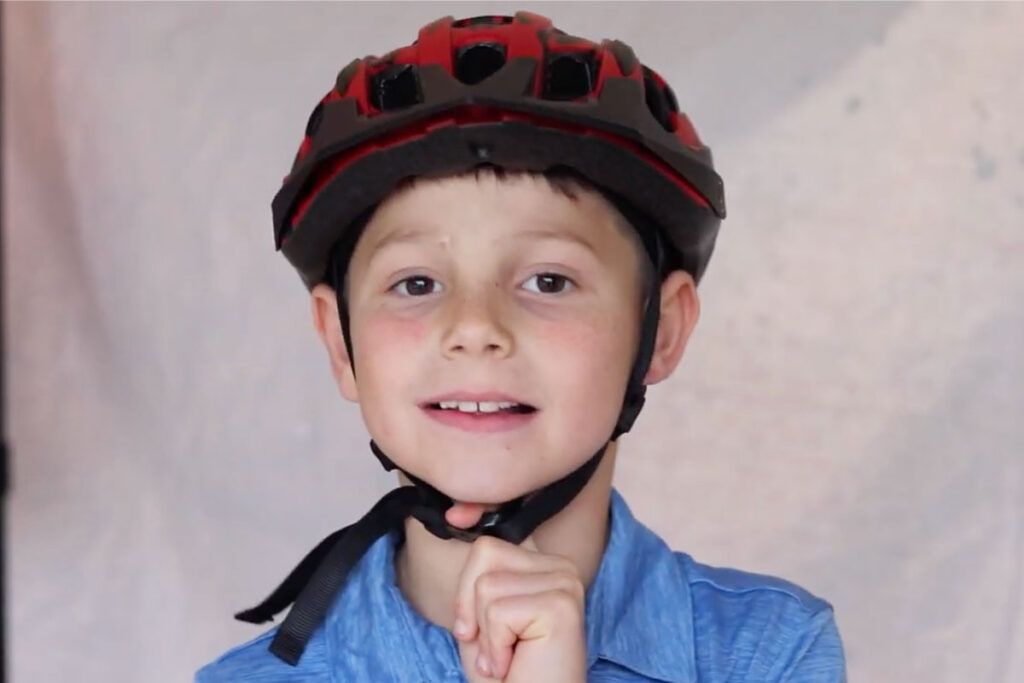
- The chin strap should be loose enough under the mentum to permit the child to buckle information technology, but tight enough that yous can fit only one finger betwixt the chin and strap.
- 1 FINGER TEST: Can I fit just one finger between my chin and the strap?
(6) Cheque Regularly!
- You should bank check the fit of your child'south helmet every time they ride.
- Adjusting your child's helmet regularly is but as important as making sure your child is wearing one.
- Helmets quickly and easily come up out of adjustment.
Kids Helmets Ownership Guide
Making sure yous empathise kids helmet sizes is conspicuously the virtually of import factor when buying a kid's cycle helmet. If y'all buy the wrong size, nothing else matters! Just in that location are many other features of a helmet that make information technology easier or harder to suit, and that affect how comfortable information technology is to wear! There are also specific helmets for biking and scootering or skateboarding. So what else should y'all expect for when choosing a bike helmet?
ane. Adjustability – Getting a Tight Fit
Helmet Internal Adjust Systems
To provide a proper fit, whatever helmet worth buying should accept an internal adjustment arrangement. Since the head shapes and sizes of children vary profoundly, internal adjust systems let the helmet to conform to heads of many sizes, helping the helmet stay in place and better protect the child.
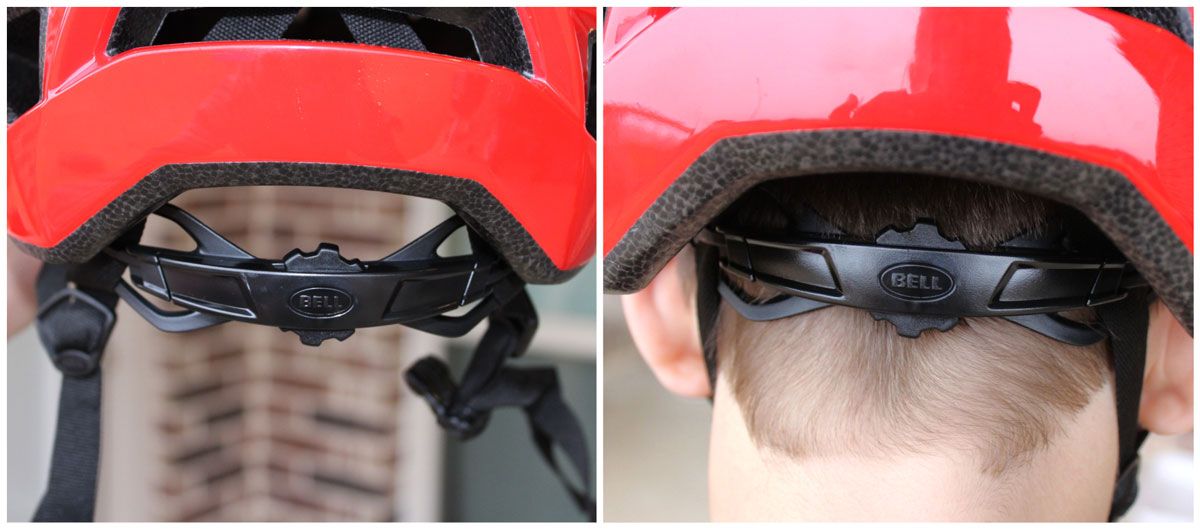
Traditional Dial-Adjust:The most common arrange system is a punch located in the back of the helmet.By turning the punch, the internal cage adjusts to fit a kid's head. Helmets are limited in the amount they tin can adapt, so it is still vital to purchase the correct size.
Pads Width Adjust: Many skater-style helmets and low-end bike style helmets exercise not come up with an adjustment system, just rather different pads of varying thickness.Prior to wearing the helmet, parents are required to insert the thickness of pad necessary to achieve a snug fit. This "aligning system" is very limited and oft results in a poor fit.
Lazer Cocky-Suit: Lazer's unique Autofit organisation automatically adjusts to fit the wearer's head. The organization adjusts via a tension wire, encased in plastic housing, that allows the internal cage to stretch to fit a child's head.
No Arrange: In that location are a few helmets out at that place that don't accept any way to adjust the sizing of the helmet. These helmets should exist avoided.
Strap Sliders
In improver to the internal-adapt system of a helmet, the strap sliders play an important role in keeping a helmet squarely on a child'southward caput. To prevent the helmet from tilting forward or dorsum, the mentum straps on a helmet should come to a "5" correct below the child's ear.
Plastic sliders hold the straps together, allowing them to continue together to the buckle.If non properly placed beneath the ear, the helmet is much more probable to fall forward or back on a child'southward head.

2. Toddler Helmets: Apartment Back for Trailers and Child Bike Seats
If you plan on riding with your kids in a trailer or bike seat, a helmet with a flat, smoothen back will help to prevent information technology from sliding frontward during a ride. The Giro Scamp is our favorite helmet with a flattened dorsum to prevent a child's caput from existence pushed frontward in a trailer or seat.

iii. Standard Bike Helmets vs. Multi-Sport Skater Style
Skater-style and standard bicycle helmets each have their pros and cons. Traditional bicycle helmets are lighter, accept more vents and are more adjustable, just are not dual-certified and tin can be harder to fit odd-shaped heads.
Skater-way helmets are generally heavy, lack a visor, take less vents, and are less likely to have dial-in adjustments, but they also offer more coverage, tin be dual-certified, and tend to fit odd-sized heads better.
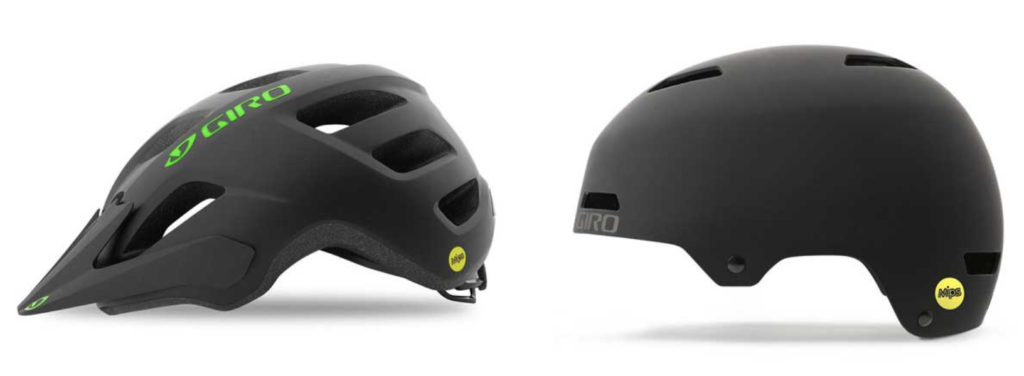
4. Construction – In-mold vs. Hardshell
There are two main types of helmet construction – in-mold and hardshell. Both types of construction provide adequate protection in a crash merely vary in durability and style. The main difference between the two types is how the outer plastic protective shell is adhered to the foam core of the helmet.
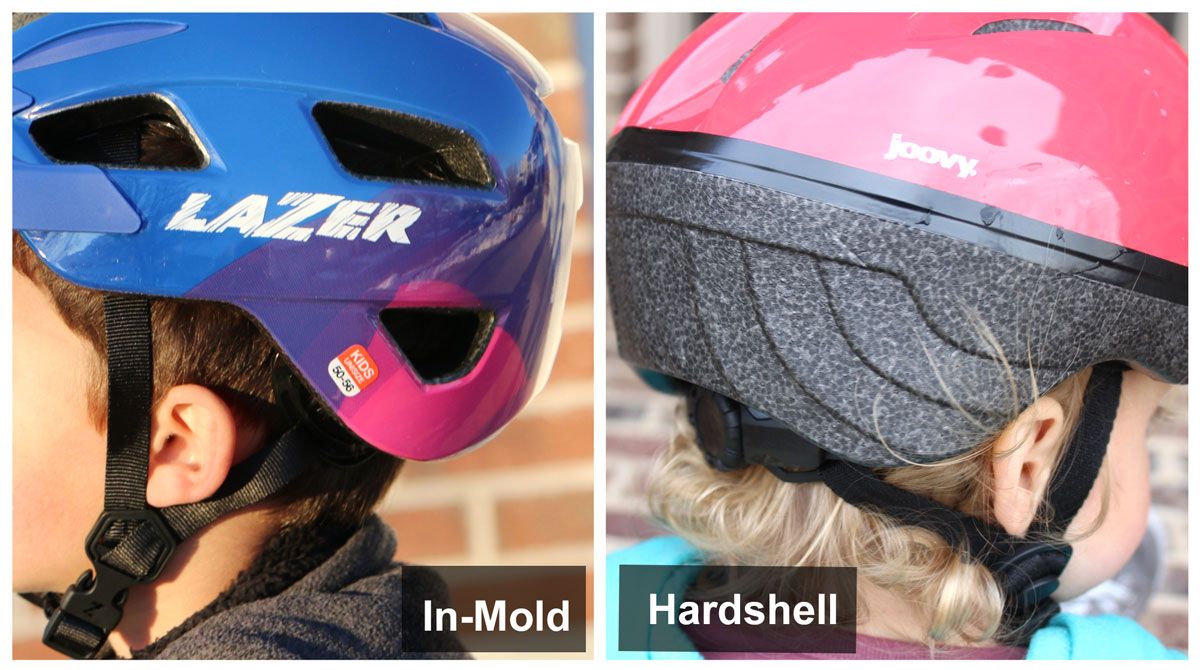
In-Mold:The outer plastic shell and the inner foam cadre are fused together with in-mold helmets. The fusing process allows for more vents and typically provides for lighter overall weight. The outer plastic beat out of the helmet will never fissure or come off equally it is fused to the foam core. Due to their thinner plastic trounce, in-mold helmets cannot be certified for skateboard use by ASTM standards.
Hardshell:There are ii primary types of hardshell helmets – skater-fashion and lower-end cycle helmets. On skater-style helmets, a thick plastic crush is glued to the foam core of the helmet.The thick trounce allows for increased durability, multiple impacts for skateboarders, and is required for ASTM skateboarding certification.
On lower-finish hardshell helmets, a sparse plastic beat out is taped onto the foam core. These thin shells hands warp, crack, come off, and offer fiddling durability.
5. Buckle Type – Standard vs. Magnetic
A buckle may not seem similar a big deal, but kids that get pinched while trying to fasten a helmet are hesitant to wear them, ofttimes leading to unwanted battles with parents.To prevent pinching, several different companies accept developed "pinch-costless" buckles.

Standard non-pinch buckles consist of a plastic guard underneath the buckle. More avant-garde systems include the magnetic Fidlock® buckles found on Lazer, Nutcase and Melon helmets every bit well equally Uvex's unique ratcheting buckle.
6. Visors – Sun and Facial Protection
Keeping the lord's day out of kids' eyes will certainly make for a more highly-seasoned ride.Most traditional bike helmets take congenital-in or clip-on visors while most skater-mode helmets have no visor.
Congenital-in visors are common on pre-school helmets every bit they provide much-needed protection to the confront in the effect of a confront plant. Helmets for youth generally have snap-on visors that are just for looks and/or limited dominicus protection.
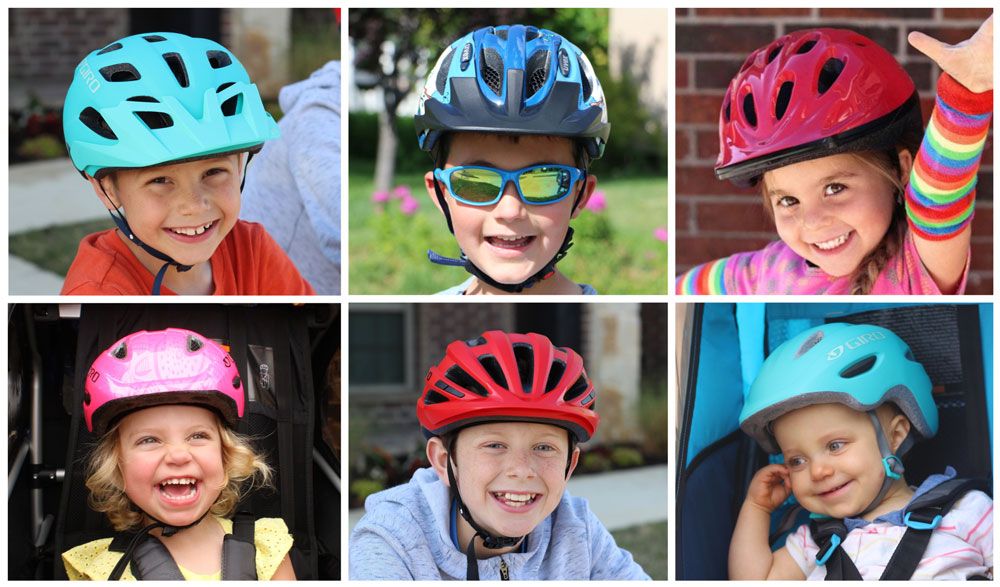
7. Multiple Bear on Protection System – MIPS
MIPS is an additional rubber feature offered on several high-end helmets. MIPS stands for Multi-directional Impact Protection Organisation and allows the free energy from the crash touch to exist captivated past the helmet regardless of what management the impact is coming from.
Studies take shown that MIPS tin subtract brain injury by thirty%. The system consists of a not-obstrusive inner plastic cage that is attached to the foam core with flexible rubber anchors. Upon bear upon, the anchors stretch, allowing the foam core to rotate around the child'south head. MIPS is available on the Giro Scamp (Toddler) and Tremor and Unhurt.

8. CSPC/ASTM Safe Certifications
All helmets sold in the US must comply with CPSC (Consumer Product Condom Commission) standards and be labeled with a sticker.All bike helmets sold in the United states of america are therefore "safe" in terms of providing protection, just but if they are properly fitted and adjusted to a kid's head. Higher-finish helmets tend to offering a better fit and stay in place more securely than depression-cease helmets, which is why we believe they usually offer amend overall protection.
Helmets are certified for specific sports and should only be used for those activities. All helmets that are CPSC certified for kids biking are also certified for in-line skating and scooters (including depression-speed, motor assisted), equally well equally hoverboards.
BMX riding and downhill mountain biking require a separate level of certification beyond the standard CPSC kid'southward biking certificate. All certified helmets are required to be labeled with a CPSC sticker. The CPSC does non have a standard sticker, so they vary from helmet to helmet.
Interested in a dual-certified helmet for skateboarding and biking? Be sure to cheque out of Best Dual-certified Helmet List.
DUAL CERTIFICATION
ASTM certification is for helmets used for skateboarding and trick roller skating. Skateboarders crash more often and in different ways, and then different rubber standards are required than for biking.

When shopping for a helmet to exist used as a bike helmet and a skateboard helmet, be sure it is CSPC certified also as ASTM certified for skateboarding. Additional information about CPSC standards tin can be found hither.
BONUS: Caput Circumference Chart By Age
Non sure what your kid's head circumference might be? Here's a chart of the 50th percentile caput circumferences by age and gender. This is a full general guide that will help as you enquiry kids helmet sizes.
50th Percentile Head Circumference Instance Helmets
Related Kids Helmet Articles
10 Best Baby/Toddler Helmets: Our fast and like shooting fish in a barrel list for the littlest noggins.
10 Best Kids Helmets: Our fast and like shooting fish in a barrel top picks listing.
Source: https://www.twowheelingtots.com/kids-bike-helmet-sizes-guide/
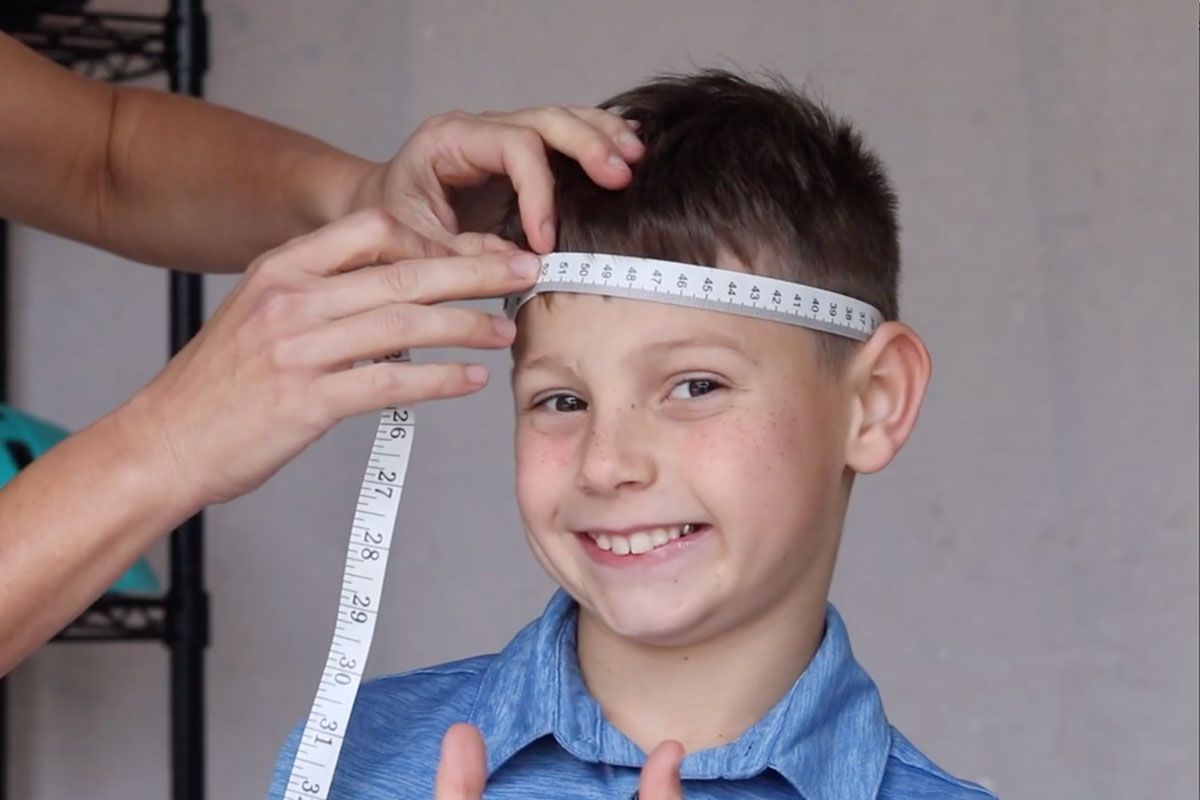
0 Response to "Forehead Chart Forehead Chart Size Funny"
Post a Comment